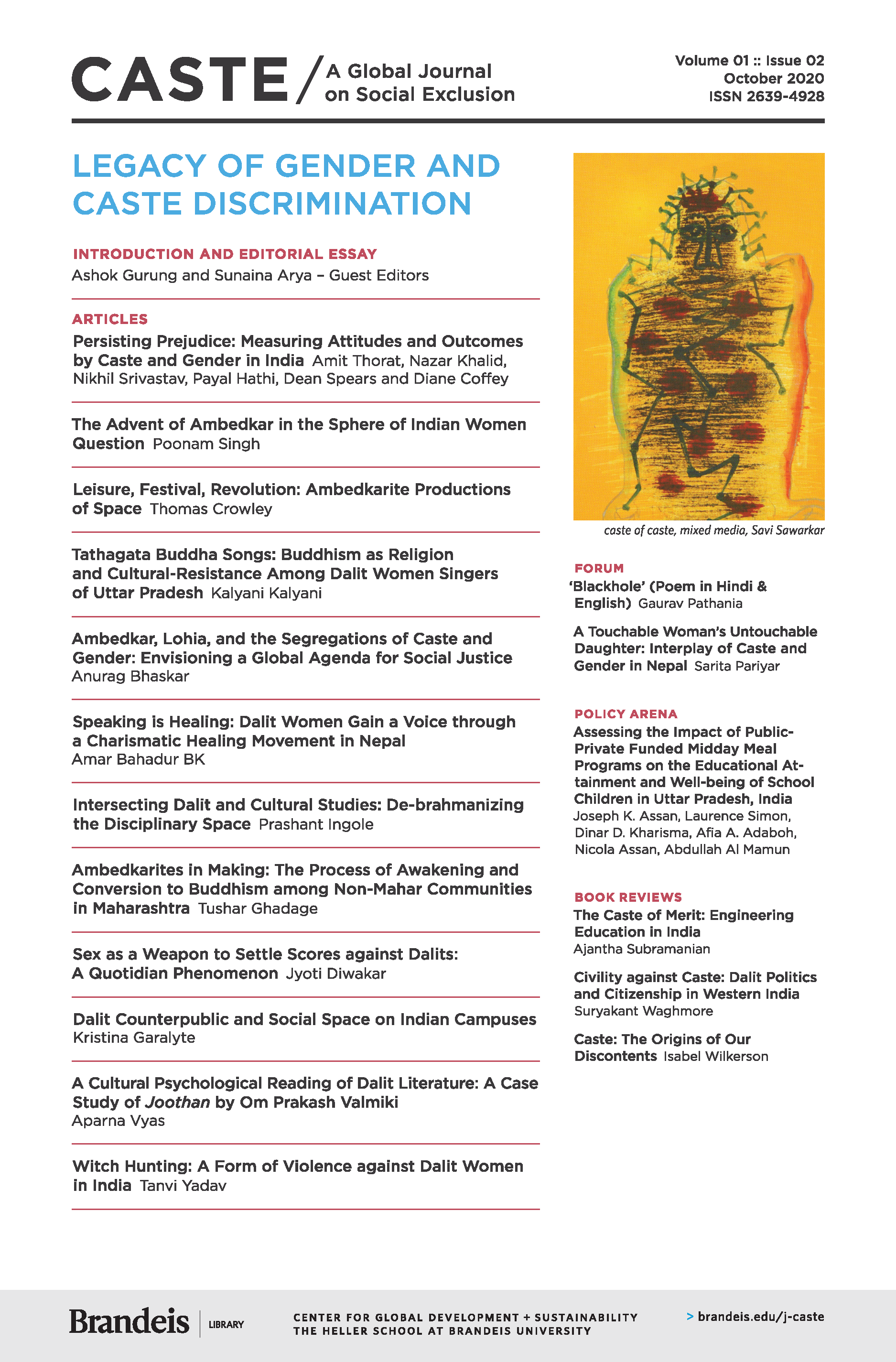Sex as a Weapon to Settle Scores against Dalits: An Quotidian Phenomenon
Main Article Content
Abstract
In the Indian context, caste controls the gender norms as women are producers of the notion of ‘caste purity’. Historically, the violation of caste codes including those related to women have been subjected to punishment through the instrument of social ostracism. Dalit men and women have been encountering culturally sanctioned violence, from higher caste people in the name of ‘violating social norms’ such as temple entry, untouchability, intercaste marriages, and so on. As a result, Dalits, especially women become easy targets for the ‘guardians of social authority’. Sadly, larger majority of Hindus remain immune to the occurrence of violence against Dalits. This article aims to address sexual violence, specifically rapes of Dalit women due to their intersectional position in the society. It explores the responses of state machinery on two case studies: Bhagana (2014) and Alwar (2019), wherein Dalit women’s rapes expose the power wielded by dominant caste communities. The paper shows the use of rape as an apparatus to humiliate a community and family in cases of land disputes involving Dalit farmers.
Downloads
Article Details
A. CORRESPONDING AUTHOR’S GRANT OF RIGHTS
The Corresponding Author grants to the Journal, during the full term of copyright and any extensions or renewals of that term, the following:
- An irrevocable non-exclusive right to reproduce, republish, transmit, sell, distribute, and otherwise use the Work in electronic and print editions of the Journal and in derivative works throughout the world, in all languages, and in all media now known or later developed.
- An irrevocable non-exclusive right to create and store electronic archival copies of the Work, including the right to deposit the Work in open access digital repositories.
- An irrevocable non-exclusive right to license others to reproduce, republish, transmit, and distribute the Work under the condition that the Authors are attributed. (Currently this is carried out by publishing the content under a Creative Commons Attribution 4.0 license.)
Copyright in the Work remains with the Authors.
B. CORRESPONDING AUTHOR’S DUTIES
- When distributing or re-publishing the Work, the Corresponding Author agrees to credit the Journal as the place of first publication.
- The Corresponding Author agrees to inform the Journal of any changes in contact information.
C. CORRESPONDING AUTHOR’S WARRANTY
The Corresponding Author represents and warrants that the Work is the Authors’ original work and that it does not violate or infringe the law or the rights of any third party and, specifically, that the Work contains no matter that is defamatory or that infringes any literary or proprietary rights, intellectual property rights, or any rights of privacy. The Corresponding Author also warrants that he or she has the full power to make this agreement, and if the Work was prepared jointly, the Corresponding Author agrees to inform the Authors of the terms of this Agreement and to obtain their written permission to sign on their behalf. The Corresponding Author agrees to hold the Journal harmless from any breach of the aforestated representations.
D. JOURNAL’S DUTIES
In consideration of the Author’s grant of rights, the Journal agrees to publish the Work, attributing the Work to the Authors.
E. ENTIRE AGREEMENT
This agreement reflects the entire understanding of the parties. This agreement may be amended only in writing by an addendum signed by the parties. Amendments are incorporated by reference to this agreement.
